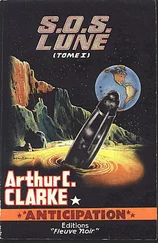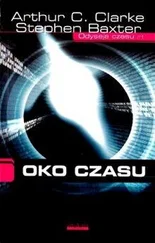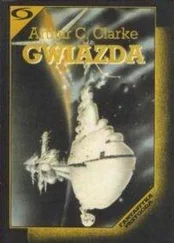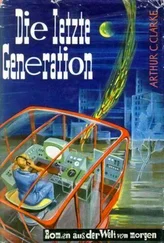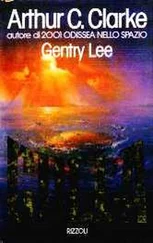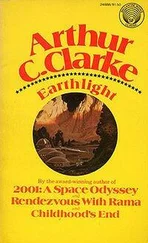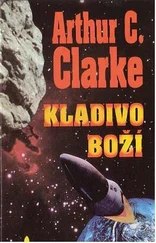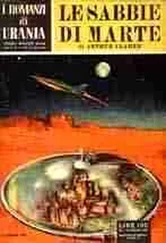Arthur Clarke - Cradle
Здесь есть возможность читать онлайн «Arthur Clarke - Cradle» весь текст электронной книги совершенно бесплатно (целиком полную версию без сокращений). В некоторых случаях можно слушать аудио, скачать через торрент в формате fb2 и присутствует краткое содержание. Год выпуска: 1988, ISBN: 1988, Издательство: Warner Books, Жанр: Фантастика и фэнтези, на английском языке. Описание произведения, (предисловие) а так же отзывы посетителей доступны на портале библиотеки ЛибКат.
- Название:Cradle
- Автор:
- Издательство:Warner Books
- Жанр:
- Год:1988
- ISBN:0-446-51379-2
- Рейтинг книги:4 / 5. Голосов: 1
-
Избранное:Добавить в избранное
- Отзывы:
-
Ваша оценка:
- 80
- 1
- 2
- 3
- 4
- 5
Cradle: краткое содержание, описание и аннотация
Предлагаем к чтению аннотацию, описание, краткое содержание или предисловие (зависит от того, что написал сам автор книги «Cradle»). Если вы не нашли необходимую информацию о книге — напишите в комментариях, мы постараемся отыскать её.
Cradle — читать онлайн бесплатно полную книгу (весь текст) целиком
Ниже представлен текст книги, разбитый по страницам. Система сохранения места последней прочитанной страницы, позволяет с удобством читать онлайн бесплатно книгу «Cradle», без необходимости каждый раз заново искать на чём Вы остановились. Поставьте закладку, и сможете в любой момент перейти на страницу, на которой закончили чтение.
Интервал:
Закладка:
One of the special subroutines in the contingency protocol handles the surprise emergence of a new spacefaring species. The first action in the sequence is the examination of one of the orbiting satellites to assess its technological sophistication. With great care the interstellar spaceship eases into a rendezvous position with one of the artificial satellites that remain mostly stationary above a single region on the rotating planet below. Using superfast burst algorithms stored in the communications macro, the spacecraft searches for and establishes the command and telemetry frequencies of its neighbor. But attempts to actually command the satellite fail, suggesting an elaborate protective code embedded in the receivers and/or a complicated redundant command procedure.
Without being able to command the satellite and thus assess its capabilities, the visiting spaceship cannot conclusively establish the technological stage of the new spacefaring species. The contingency protocol calls, in this situation, for trying to “capture” the satellite to perform in situ analysis, provided there is no obvious danger from devices onboard the satellite itself. This particular branch in the software logic for the spaceship was the subject of intense debate by the oversight board of the Committee of Engineers back during the design process several cycles earlier. Many of the more experienced engineers thought that it was risky to include such a logic loop, primarily because of the possibility that a paranoid emerging culture might arm their satellites with destructive devices that could not be easily recognized and disarmed.
However, it was argued, on the basis of historical evidence from throughout the galaxy, that since most incipient civilizations abolish warfare and aggression before they become spacefaring, absence of a clearly identifiable destruct or protective device was sufficient additional evidence to allow the careful capturing and dismantling of a satellite. And everyone agreed that the detailed information about the technological status of the new species that would result from such “reverse engineering” would be extremely valuable in completing the assessment of the risk to the repatriated species.
Great remote manipulator arms extend from the spacecraft, seize the surveillance satellite, and pull it into a large room with vaulted ceilings. An army of small electronic robots attacks it at once, scurrying all over its surface with probes and attachments. Trillions of bits of data about the satellite are fed into the primary data storage device in the spaceship computer. The new spacefarers are not very advanced technically. In fact, the computer algorithm concludes, it is very surprising that they have even mastered launching and maintaining so many satellites.
An explosion starts to rip through the room. An astonishing sequence of events takes place almost instantaneously after the explosion, as the spaceship deploys its protective resources to stop the spread of the fireball and mitigate the damage caused by the small nuclear device that has vaporized its host satellite. The explosion is quickly contained by unknown techniques, but not until considerable destruction has been caused onboard the interstellar craft.
An elaborate self-test occupies the great spaceship after the explosion. Detailed computer analysis of the damage indicates that the probability of successfully deploying the cradles at the additional eight planets would be measurably increased if the mission were temporarily interrupted to allow some repair processes to take place. A safe haven to conduct the repair operations, in a known environment with very few variations is the concomitant requirement. The master computer decides, based on the system and subsystem constraints that must he applied during the repairs, that the shallow ocean floor on this target planet is a perfect place for such a hiatus in the mission plan.
The spaceship descends into the atmosphere, again reconfiguring itself to expose a set of aerodynamic control surfaces. During its rapid descent, the flight path is crossed by a bullet-shaped vehicle that has just been released from a high altitude airplane. The spaceship approaches and then flies alongside the missile. The missile telemetry is intercepted by the spaceship and correlated with the types of downlink data extracted from the satellite earlier. The spaceship computer uses its enormous processing capability and cross-correlation algorithms to try to break the command code of the tiny missile. Eventually it is successful and the visitor is able to interact with the guided projectile.
The spaceship commands the missile to read out its guidance subroutines. Performing quadrillions of computations per second, the intelligent computer at the heart of the interstellar craft deduces the targeting strategy for the missile. A target image that would result in the missile landing in the ocean, close to the chosen location for the space vehicle, is commanded into the missile’s guidance algorithm The spacecraft and missile plunge in tandem into the Gulf of Mexico.
The two vehicles come to rest about two miles apart on the ocean floor. Within the carefully coded fault protection software of the great spaceship, which took over operation of the craft immediately after the explosion of the satellite, four separate activities are being conducted in parallel. One of the processors is sorting through the data archives associated with this particular planet to determine what possible indigenous species could have gone through an evolutionary burst and become spacefaring with such rapidity. Coupled with this first set of computations is an evaluation of the impact of such a local advanced intelligence on the survivability of the repatriated zygotes. Among the questions addressed by the evaluation is what active steps can be taken by the spaceship now to increase the likelihood of successful embryo germination and development.
A third processor in the central computer performs a thorough, detailed analysis of the spacecraft state, including careful assessments of repair techniques and materials needed to fix each and every damaged component. The fourth major parallel subroutine directs the effort of the small flat robots that go out into the ocean, first to verify that the nearby missile is harmless and can be safely brought back to the ship, and second to catalogue all the flora and fauna in the neighborhood in case any kind of camouflage becomes necessary.
The carpets bring the missile to the spaceship for additional analysis. No major new insights are gleaned from this study. The engineering similarities between the missile and the earlier artificial satellite are simply catalogued in the data archives. The concurrent spaceship damage assessment concludes that all the raw materials and tools necessary for the repairs are available except for the proper quantities of lead and gold both of which are difficult and time-consuming to make in the transmuter. If somehow enough additional lead and gold can be found, then the spaceship can be ready to leave this planet in three local days; if the spaceship has to make the lead and gold by itself, including leaching the elements in trace amounts from the ocean around it, then the total repair effort might take as long as thirty days.
The other two processors reach some equally interesting probabilistic conclusions. Mostly based upon the data taken during the endangered species roundup seven cycles earlier, two separate types of animals, one land-based and one water-based, are identified as the only possible candidates for the evolutionary burst that produced spacefarers in such a short time. Actually, according to the computer, if the land-based human beings survived their earlier nadir (around the time when some specimens were removed by the zoo ships of the Colony) and did not become extinct, they had by far the better chance of becoming the space voyager, especially in view of the results of the experiments conducted on them at the Zoo Complex. But if, indeed, the descendants of those bipedal, upright, aggressive creatures have become spacefarers, the processor warns, then the chances for survival to maturity by the zygotes in the cradle are extremely low. Unless somehow significant design changes in the cradle can be made on the spot or the development of the repatriates can be kept a secret from the humans for as long as a millicycle.
Читать дальшеИнтервал:
Закладка:
Похожие книги на «Cradle»
Представляем Вашему вниманию похожие книги на «Cradle» списком для выбора. Мы отобрали схожую по названию и смыслу литературу в надежде предоставить читателям больше вариантов отыскать новые, интересные, ещё непрочитанные произведения.
Обсуждение, отзывы о книге «Cradle» и просто собственные мнения читателей. Оставьте ваши комментарии, напишите, что Вы думаете о произведении, его смысле или главных героях. Укажите что конкретно понравилось, а что нет, и почему Вы так считаете.

